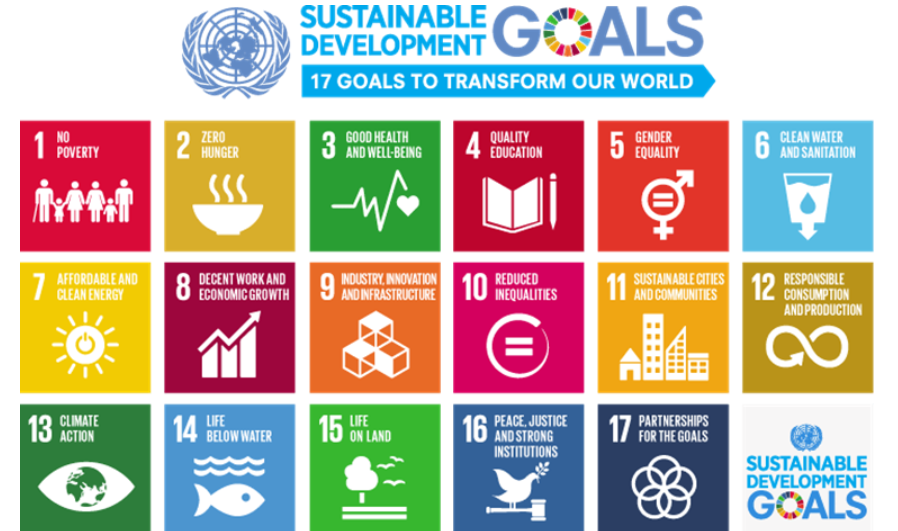MOOC Formal Caregivers-EN
 Goal: The student substantiates the different partners and strategies for intersectoral action
Goal: The student substantiates the different partners and strategies for intersectoral action
In the former four modules you have studied climate change, the implications for heat (Module 1) and the implications for heat related health problems (module 2). You have also learned that heatwaves have become a concern because they have a negative impact on public health and well-being, the urban structure and the working and business opportunities (module 1 and 2). In particular you investigated the consequences of heat for the health of older people (Module 2). It is not strange that in public news the impact of heat is subject of discussion and there is growing interest for research both on implications as on effective intervention activities and strategies. You have studied interventions that we can undertake at the level of individuals (module 3). You also learned that improving resilience involves increasing adaptation capacity, making buildings more heat-resistant, and reducing the population's vulnerability (module 4). In week 1 and 2 of module 5 you studied Urban heat islands (UHIs). And you learned that they can be mitigated using neighborhood and city-level strategies.
In this module we try to assist you in bringing this information together. Adaptation and mitigation efforts for climate change and urban heat stress are often addressed separately, but integration does make sense. Cross-departmental collaboration, among health, energy, water resources, urban planning, and construction sectors, could create new opportunities for increasing heat stress resilience. So in this last week everything comes together in intersectoral activities to prevent or to minimize the effects of heat related health problems.
The issue is that those who are in charge in each sector that is or may be involved in tackling or preventing heat related health problems, are often not able to influence decisonmaking in the other sector. So each sector may do their best, but there will be no interaction, shared responsibility or shared solution finding.
For example, the potential of the (public)health sector to influence urban planning decision-making in order to minimize the health impacts of heat is limited.
Those decisions are outside the sphere of influence of the health sector.
However, if urban planning and management includes health considerations, it can make long-lasting differences to health and well-being.
Therefore intersectoral action is crucial to reduce health risks related to heat. Heat related health problems are therefore so called wicked problems. Problems that are not easy to solve, at least not with a linear problem solving proces. Working on wicked problems asks for involvement of many sectors and stakeholders in a shared proces; it requires intersectoral action and intersectoral policy making.
If you want to read more about the why and how of intersectoral action for heat related health risks, the article bij Gertrud Hatvani et all (2018) is recommended https://doi.org/10.1016/j.uclim.2018.05.001. Chapter 2 of the WHO Heat and health in the WHO European Region is also helpful. https://www.who.int/europe/publications/i/item/9789289055406
In the following figure this is illustrated:
Figure 1: sectors related to heat stress resilience.

Source: Hatvani-kovacs, G. et al (2018) https://doi.org/10.1016/j.uclim.2018.001
There are actually two approaches to work on an integrated approach of heat related health problems. Either one can do a health impact assessment on the interventions in the other sectors. This may result in awareness or even activities addressing heat and health as part of their own policies.
However, also the influence of vested interests may play an important role wheter this will happen or not.
The other way is intersectoral collaboration where all sectors involved negotiate until they agree on the implementation of mutal plan. In the construction of these plan each sector involved brings in its own expertise and means regarding the problem. In small, non-linear development sessions, the combination of this is combined in order to solve in the long germ the complex problem of heat related health problems.
Pressure of social movements who ask or confront governments with the effects of climate change may facilitate or enlarge the willingness to pay attention to heat related health problems. Either in the way of an impact assessment or as intersectoral collaboration. Impact assesments, resulting in both negative or positive insights on the planned policy in one sector may even result in more awareness for intersectoral collaboration or even intersectoral policy making. In some countries mandatory health impact assessments of urban interventions are necessary in order for approvement. Leaders who emphasize intersectoral policymaking and action are crucial in general but also when addressing the specific issue of heat related health problems.
In the article of Buse et all (2022), the following facilitators and barriers of intersectoral action are mentioned:
Disenablers
-
No political support
-
Leadership is not adequate and does not promote linkages between sectors
-
There is hesitation and even resistance within organisations or institutions
Enablers
-
Leadership with decision making power
-
Common goals that are agreed upon between the sectors
-
Coordination in an intersectoral way
-
Pressure from community to undertake action
-
Responsible authority
Recommendations to stimulate an intersectoral policy approach to beat heat related health problems can be found here Insert here link to policy recommendations. https://www.hope-heatwaves.eu/policy

The possibilities of each sector to effectively address heat related health problems are different in time
The public health sector, where both health care professionals as social workers are working, is most of the time active during periods of heat. The interventions within this sector are most of the time targeted to immediate address negative health consequences of heat. Most of the time these interventions are aimed at individuals or specific groups. Besides that the public health sector is also the sector that provides information, posts heat alerts, maps heat wave vulnerability, provides education to the general public ánd to health and social workers and collects data.
The results of their interventions are at short term visible, effective and relatively cheap to implement. The other sectors as presented in figure 1 work on interventions that are effective in (medium) long term and are more costly. But the impact may be large. These interventions are targeted at a larger population, sometimes even an entire community or city.
The building and construction sector can develop guidelines how to built and heat resistant buildings (including efforts to reduce the energy consumption) and put some financial incentives on the development and design of these buildings.
Urban planning sector can put efforts in creating cool (green) places, facilitate cool public spaces and refugees and integrate heat vulnerability maps in urban planning. Urban infrastructure can work on the prices/tarifs of water and energy consumption in relation with education and advise on how to be water- en energywise and they also can adopt and prepare public transport to be environmentally friendly.

To close this module, we return to the first weeks of module one. Because the puzzle is even more complex. You have learned in module one that heat is just one of the aspects of climate change. This means that heat en health policies and activities, which should come together in an intersectoral HHAP are also part of a larger policy. The HHAP could or should again be integrated in broader policies concerning sustainability climate and green.


Hatvani-Kovacs,G., Bush, J., Sharific, E. and Boland, J. (2018). Policy recommendations to increase urban heat stress resilience In Urban Climate, vol. 25 pp 51-63. https://doi.org/10.1016/j.uclim.2018.05.001
Buse, K., Tomson, G., Kuruvilla, S., Mahmood, J., Alden, A., Meulen van der, M. Ottersen, O., Haines, A. (2022). Tackling the politics of intersectoral action for the health of people and planet. In BMJ 2022; 376. doi: https://doi.org/10.1136/bmj-2021-068124 BMJ 2022;376:e068124
Van der Vliet, N., den Broeder, L., Romeo-Velilla, M. et al. Facilitators and barriers of intersectoral co-operation to promote healthier and more environmentally friendly behaviour: a qualitative evaluation through focus groups for the INHERIT project. BMC Public Health 22, 617 (2022). https://doi.org/10.1186/s12889-022-12974-8

